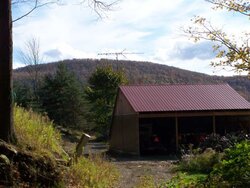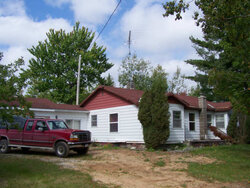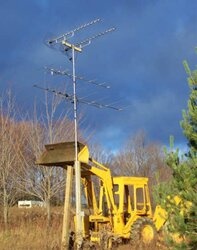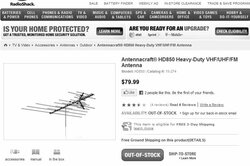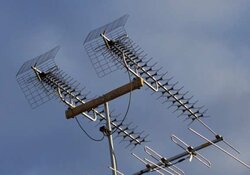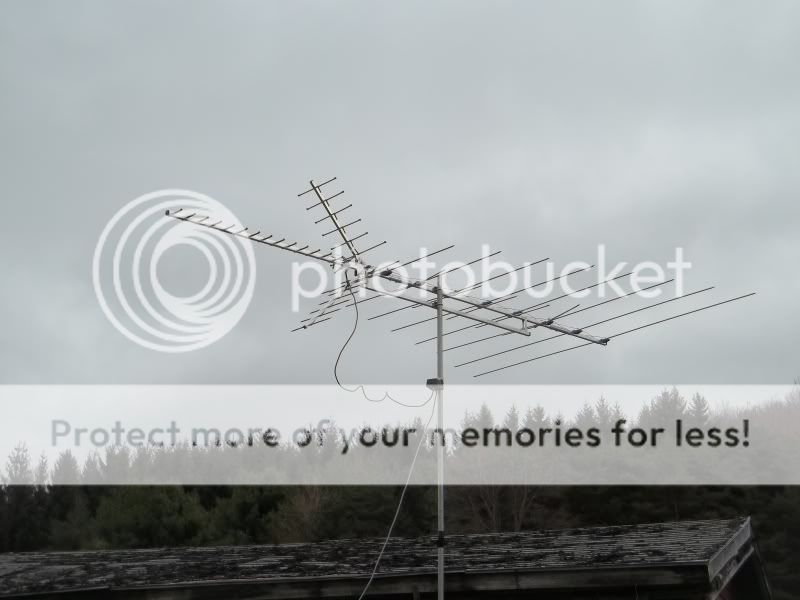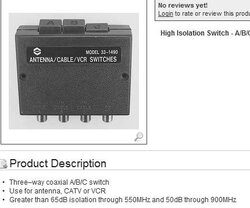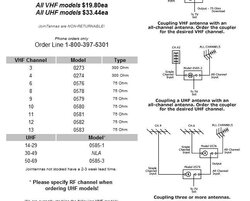chrisasst said:
. . . it would be nice to get them all though.
So I don't know if I can connect the 2 antennas together and be able to pick those up while moving the big antenna back south to pick up the others or not.
Question ---- how do I know what direction to point, there has to be a device right?
You guys have been super helpful, this is all new to me. I am sure you are sick of me asking some of the same questions over
I'll try to answer some of your questions.
First - keep in mind that the new "antenna" you just bought is actually three antennas, NOT one antenna.
Joining antennas works in many types of situations but not YOUR'S. Two or three different band antennas can be joined easily (e.g. a VHF low to a VHF high to a UHF). Two same band antennas can be joined easily when the antennas are identical and pointed in the exact same direction (stacking or ganging). The new AntennaCraft unit just got has three bands joined together already
It's a VHF low band, VHF high band and a UHF - all three on one beam and joined together.
There is no good way I know of to join a fourth UHF (your DB8) antenna to the three you aleady have, without screwing things up. The only way to do that would be to stick a one-channel filter on it and then use a coupler. And that would only work if the main big antenna is not getting that channel signal at all. If there is just one channel you really want bad, yes it can be done with a filtered-coupler (Jointenna).
Your question about burying coax? If you want it to last you ought to buy direct- burial coax that is glue-impregnated and made for underground use. Otherwise, you need to spend $20-$30, go to Home Depot, and get some PVC conduit. Put regular grade coax in the conduit and then bury it, and it will last fine.
About testing for signals . . . In the good old days of analog, all you had to do is hook the TV to the antenna and spin it around until you found the best signal. If off, the picture would be snowy and clear up and you pointed better.
With digitial? It's all or nothing. You need to have a notebook and a pen. Then hook a TV to the antenna. Then move it around full circle, maybe 20 degrees at a time and do a full channel scan at each position. That will be 18 separate channel scans. That is the only way you're going to know what works and where. Also note that your TV has a signal-quality meter. Since digital is all-or-nothing - a picture either looks great, or it's not there at all. So, the only way you can tell when moving the antenna improves things - is by reading the signal-quality meter on the TV. Note that the converter boxes also have the meters.
The first time you do a full scan, it will take a little time. But, you only need to do it once and then you'll know. If you don't do it, you'll be guessing forever.
Also note: You don't always know for sure what direction your antenna is getting signals. Just because you have the front of the antenna pointed north, it still may pick up some channels from the south - coming in backwards into the antenna. They won't be as strong though. This is another reason why you need to do a full-circle scan and also -write down signal-quality readings at various points for the channels you care about.
The channels you just mentioned getting are supposed to be as thus IF they are coming to you in a straight line and not bouncing off a a mountain top somewhere. But since we don't know if they're coming into the front or back of your antenna, you need to do that full scan. Also remember that the channel #s you citied are not the real channel/frequency numbers. They are the make-believe "virtual" channel numbers.
3.1, 3.2, 3.3 (all on actual UHF channel 24) - 16 degrees magnetic
5.1 - (all on actual UHF channel 47) 17 degrees magnetic
12.1, 12.2 (all on actual VHF channel 7)- 179 degrees magnetic
24.1, 24.2, 24.3, 24.4 (UHF channel 25) - 16 degrees magnetic
43.1 (all on actual UHF channel 44) - 3 degrees magnetic
68.1 (all on actual UHF channel 19) - 3 degrees magnetic
In your situation . . . if it was me, I'd probably mount the DB8 facing the other direction. Then I'd use two amps and two separate runs of coax into the house - all hooked to a $5 co-ax A/B switch box. Also note you can buy dual-lead siamese coax if you prefer. In one of my houses I have three separate antenna systems coming into the house with a three-way switch-box (A/B/C). Very simple to hook up and very little to go wrong.
Your other option is to just use the new antenna you've got that already is VHF low, VHF high, and UHF - and just stick a rotator up. Like I said though, these $90 rotators don't work great in extreme cold. THe nice thing about having a co-ax switch box instead is - the simplicity and durability.


